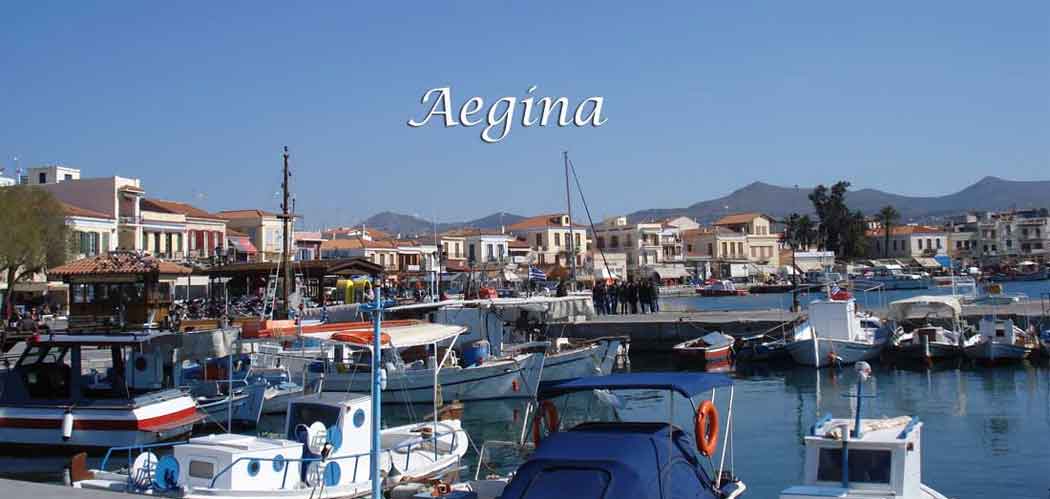The villages of Aegina
Agioi Asomatoi
A village located 6 km from the port of Aegina, following the internal road towards Agia Marina, and owes its name to its homonymous central church. There are two other churches in the village, Taxiarches and Osia Natrona. In less than 1 kilometer is the Monastery of Agios Nektarios.

Anitsaio
It is one of the villages furthest from the center in Aegina with its own unique character. Anitsaio is located at an altitude of 230 m and has a central church and a mill that testify that in the past its inhabitants were engaged in agriculture, while its houses, especially the oldest ones, stand out in terms of architecture.

Vagia
Vagia is a traditional fishing village and is located in the northern part of the island. It is an ancient settlement and its position is so special that for this reason Aegina was an important part of the territorial expansion of the Germans during the 2nd World War. The end of Vagia is called Tourlos, where today the Tourlos Naval Base is located. During the 2nd World War it was a military base of the German troops and the largest of the 3 observatories of the island.

Vathi
Vathi is one of the largest settlements in Aegina with old farm houses. It is located after Leonti and before we reach Souvala. In Vathi in the past, the inhabitants were engaged in vines, olives and agriculture in general. In Vathi there is the Church of the Holy Trinity and the small church of Prophet Ilias located at the top of the hill above the settlement. From here the view is panoramic. After Agia Triada, just outside Vathi, on the road to Leonti, is the Women’s Holy Monastery of Panagia Eleftherotria.

Kylindras
On the route from Agia Marina to Portes there is a sign that leads to the small village of Kylindra, to the northeast of Anitsai. It seems that it used to be one of the largest villages of Aegina. Today there are quite a few renovated as well as newly built houses in the area and not without reason, since the village offers tranquility, beautiful nature and a wonderful view towards the bay of the coastal village of Portes. The square of Kylindra is an old threshing floor, while across the street you can see a traditional cistern, two more signs of the life of this particular village over the years.

Kypseli
The area of Kypseli Aegina is about 4 kilometers from the central port of Aegina. The area used to be called “Damaged”, a name that came from a half-finished little church that was never completed since 1845 when its construction stopped. In the central square of Kypseli, there is the church of Evangelistria and a square.

Lazarites
Lazarides are located in a mountainous area (at 330m.), opposite the road that leads to Mt. The beautiful church of the village, Agia Paraskevi, stands out. A dirt road leads to the top of the hill, to the observatory at 410m. It is worth pointing out that in this village, through surface and excavation research, a settlement has been identified, and to the southwest of it the cemetery, which includes built chamber tombs.

Marathonas
Marathonas is 5 kilometers from the city of Aegina. An area known for the landing of Ioannis Kapodistrias in 1828, when he organized the first Greek government with Aegina as its first capital. At the same time, it is a point of attraction in the summer months for bathers as it has 2 sandy beaches, Marathon A and Marathon B.

Mesagros
Mesagros is a special and historical area. Its name comes from the location of the area, i.e. the position of the village in a plain between mountains. Mesagros is well-known and especially known for the potter craftsmen who lived in the area. The soil from the surrounding mountains was what helped the development of pottery since ancient times.
Mesagritic jugs are still known for their quality and for keeping the water at low temperatures even in the summer months. An important fact is that its climate was one of the driest in Greece.

Pachia Rachi
Characterized as a “traditional settlement”, Pachia Rachi (or Pachiorachi) maintains unchanged the image it had in the past and its local character. It used to be the only village on Mt. Hellenic, which is no longer the case, but remains authentic from end to end. It is noteworthy that some of the fighters of the Revolution of 1821 came from this historic village. It is said that the Aeginite sculptor Ioannis Karakatsanis was also born here. The church of Agios Dionysios stands out with its large bell tower, blue dome and mystical atmosphere. The route to Pachia Rachi, as well as the view from the village, certainly does not leave anyone indifferent.

Tzikides
This village may not be one of the most well-known parts of Aegina, but it is definitely on the rise from a construction and building point of view. Tzikides, thanks to the natural beauty of their landscape and the view, fascinates the visitor.

